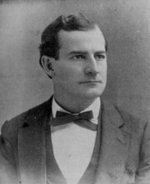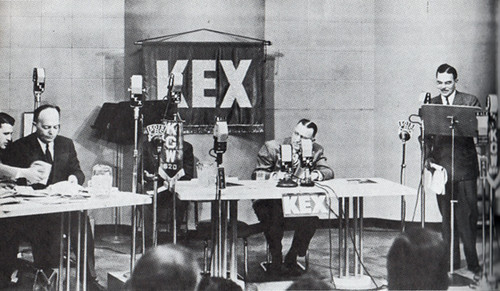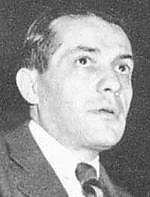The presidential election of 1828 was a turning point in American political history. It marked the end of the caucus system that dominated national presidential politics for the first quarter of the century but preceded the introduction of the national nominating convention. It was the last presidential election in American history with no national nomination event; none was needed, since the two top finishers of 1824 immediately began to maneuver for the 1828 election. President John Quincy Adams’s balanced and visionary administration was hampered by the charge of a "corrupt bargain" raised by his 1824 opponent, Andrew Jackson (though Jackson originally crafted the plan for himself). The Jackson campaign initiated bitter attacks upon Adams, precipitating the nastiest presidential election since 1800.
The JQA Administration
In case anyone had not noticed, the "era of good feelings" had ended. By the time JQA was inaugurated as the sixth president (3/4/1825), he was aware of the difficulty his administration faced. VP Calhoun and U.S. Sen. Martin Van Buren (DR-NY) organized the anti-administration forces in the Senate. They and U.S. Rep. George Kremer, who coined the oft-repeated phrase "corrupt bargain," charged continuously that political intrigue had overturned the will of the people and elected JQA. Adams’s hopes to establish a national university, a national observatory, and federal support for the arts and sciences came to naught.
Andrew Jackson immediately started laying the groundwork for the 1828 election. The Tennessee legislature nominated him for president on 10/7/1825 [National Intelligencer, 11/1/1825] by adopting a document named the "Preamble and Resolution." Jackson then resigned from the Senate, assuring the legislature he had not used his office as a means of "intriguing for the Presidential chair." He endorsed a constitutional amendment to allow the election of a president by a plurality of the electoral vote and said that if elected, he would not appoint members of Congress to his Cabinet. (McCormick, p. 120)
During the 19th Congress, the two houses debated how the president should be chosen. Jackson supporters sponsored his proposed amendment allowing a plurality choice, while others advocated the district mode. While the term "popular vote" to describe non-legislative selection of Presidential Electors had been used on occasion in the past [for example, in the New-Hampshire Gazette, 11/17/1801], the term "the popular vote" apparently was first used on the floor of Congress by U.S. Rep. George McDuffie of South Carolina. In a famous speech (reported in the Richmond Enquirer on 3/2/1826), McDuffie referred on occasion to "the" popular vote as a means of designating the selection of Presidential Electors by the people. When the proposed Jackson amendment failed by a vote of 90-102, several states responded by shifting their mode of choosing the Electors to the General Ticket in order to maximize their influence in 1828.
The Midterm Election of 1826-1827
Jackson supporters started the United States Telegraph in 1826 in Washington to provide a nationwide partisan press (no relation to the 1844 invention called the telegraph). Editorials in the paper were carried in local Jackson newspapers around the nation. For the most part, the midterm election was not a referendum on the Adams administration. In many states, the old fault lines remained in place – in CT, three factions nominated a slate of candidates, while in NH the state DRP nominated a slate of U.S. House candidates that ran practically unopposed. Major contests appeared in NJ, NY, and OH; the Administration slate swept NJ, won a majority in Ohio, and slightly failed of a majority in NY. Overall, the Jackson party gained seven U.S. House seats – enough for control.
In early 1827, some Jackson supporters decided to collect the election statistics for 1824. They contacted newspapers in each state in which the Presidential Electors were chosen by the people and produced a table showing that Jackson had been the choice of the people in 1824. This first attempt was fraught with irregularities but was substantially accurate. It showed not only that Jackson had placed first, but that his vote (41%) was about the same as the sum of that for Adams (32%) and Clay (13%). When U.S. Rep. John C. Wright of OH gave a speech in the House in early 1828, he described the "popular vote" as the nationwide sum of the votes for Presidential Electors and thus established the current usage.
The Campaign of 1828
One development of 1828 was the increased number of state conventions called to nominate slates of Presidential Electors. Such conventions had been held on occasion in earlier elections, but now became universal replacements for state caucuses. The Administration’s Pennsylvania state convention (1/4/1828) nominated JQA for a second term and Gov. John A. Schulze for VP; the latter declined to run, so the convention nominated US Treasury Secy. Richard Rush [Pittsfield Sun, 1/24/1828]. Rush was then endorsed by NRP conventions in Virginia on 1/12 [Cooperstown NY newspaper The Watch-Tower, 1/28/1828] and Maine on 1/23 [Essex Gazette, 2/2/1828] and completed the national ticket (bumping sitting VP Calhoun). The Pennsylvania Jackson convention nominated a slate of Jackson-Calhoun Electors on 1/8/1828 as a means of locking the sitting VP into the team [New-Hampshire Sentinel, 1/25/1828]. The Jackson-Calhoun ticket was then endorsed by other state Jackson conventions, though not unanimously; the Virginia convention nominated Calhoun for VP with 164 votes to 20 for Nathaniel Macon and 5 scattering [Baltimore Patriot, 1/18/1828].
Jackson rang in the presidential campaign season of 1828 with a visit to New Orleans on 1/8/1828, the 13th anniversary of the battle. The Louisiana legislature (which reluctantly supported him in 1824) organized a four-day event in his honor. Jackson left home in late 12/1827 and travelled by steamboat; he stopped first at Natchez and arrived in New Orleans on 1/8. He was careful to avoid political speeches and received positive nationwide press bringing his victory there back into the remembrance of the voters.
The Jackson campaign believed that a direct appeal to the people would result in his landslide victory. It therefore organized mass rallies throughout the nation with associated barbecues, parades with large banners, local Jackson Clubs, and the raising of "Hickory poles." Jackson ended his policy of issuing letters outlining his positions. After drafting the first of such letters for 1828, his campaign team unanimously objected – John H. Eaton, Van Buren, and James Knox Polk. Eaton’s advice was "Be still – Be at home." Van Buren wrote "Our people do not like to see publications from candidates." Throughout the campaign, Jackson issued one letter on the tariff in response to a question by the legislature of Indiana and one to deny charges that he had participated in the Aaron Burr conspiracy.
The Jackson press initiated a vitriolic attack on President Adams. In addition to being involved in the "corrupt bargain" of 1825, Adams had purchased a billiard table so he could gamble in the White House. He was also charged with seeking to institute a monarchy. The Jackson campaign, however, had opened a door that could not be closed. Charles Hammond, editor of the Cincinnati Gazette, called Jackson an adulterer because he had married a divorcee (in a time when the biblical injunction was taken seriously). John Binns of Philadelphia issued the famous "coffin handbill," which illustrated Jackson’s decision to execute eight militia men under his military command who wanted out. Jackson objected to the "base calumnies" of the Administration press but didn’t seem to notice the scurrilous charges promulgated by his own campaign.
Casting the Popular Vote
The popular vote was cast in the various states in a three-week window, beginning on 10/31/1828 in Ohio and Pennsylvania and ending with four states voting on 11/19/1828. When the voting began, Jackson had certain states worth 109 electoral votes plus four leaning states and half of MD and NY for an additional 43 electoral votes (109+43=152). Adams had six firm states with 45 electoral votes and was leading in four states plus half of NY and MD (45+67=112). With 131 being a majority, Adams needed to take 19 electoral votes from Jackson to win.
The first two states were Pennsylvania and Ohio. The inexplicable attraction of the former state to Andrew Jackson resulted in a minimal Adams effort there – but Ohio was hotly contested. On election day, voter turnout in these two states tripled from 96,000 in 1824 to 283,000. Pennsylvania voted as expected, though Jackson’s margin of victory fell from 76% (1824) to 67%. It was the first time in US History that a presidential candidate won more than 100,000 votes in a single state (breaking the earlier record of 50,000 given to DeWitt Clinton by Massachusetts in 1812). In Ohio, Jackson pulled off a 51-48% win – taking the state out of the "leaning Adams" column and making it very difficult for Adams to be re-elected. The status: Jackson 122+43=165; Adams 45+51=96.
Nine states voted on 11/3/1828: CT, GA, IL, ME, MA, MO, NH, NY, and VA. Turnout was even more pronounced – it increased fourfold from 97,000 in these states to 493,000. The phenomenal turnout of this one day far surpassed the 364,000 nationwide turnout in 1824 and was at the time the largest number of votes cast on a single day in American history. Nationwide, Jackson led in the day’s popular votes with 248,000 to Adams’s 241,000 (and 5,000 scattering in New England). The big prize of the day was New York, where Jackson won a narrow 8,000 majority out of 270,000 votes cast and set a new record for the most votes cast for a candidate in a single state (139,000). The state’s electoral vote was allocated by district, and Jackson won 20 Electors to 16 for Adams. Jackson won the two contested states of IL and MO, and the other states voted as expected. Altogether, Jackson won 60 electoral votes to 55 for Adams. While the margin was close, it put Jackson over the 131 needed to win. The status: Jackson 149+15=164; Adams 69+24=93. Even if Adams won all close states remaining, he would lose nationwide by 149-108.
The next clump of states voted between 11/4 and 11/14. These seven states – AL, IN, MS, NJ, NC, TN, and VT– offered only two contests. By the time these states were voting, news of the earlier races was trickling down through newspapers. New Jersey voted on the 4th and 5th before the results from the 3d were known; turnout doubled from 1824, but this time Adams won a 52-48% victory to snag it from the "leaning Jackson" column. The other contested state was Indiana. Adams expected to be competitive with Clay’s support, but Jackson won a 56-43% victory. The status: Jackson 154+6=160; Adams 77+24=101.
In the last four states, voting on 11/19, turnout increased from 58,000 to 129,000 even though it was already known that Jackson had won the election. Of the three, only Rhode Island leaned heavily to either candidate. While in 1824 the results of earlier states helped Adams, in 1828 they helped Jackson. Jackson won the battleground states of KY and LA; Adams received more votes in MD (along with 6 of the 11 Electors).
The result of the election was a Jackson victory with 56% of the vote. Over one million people voted, three times the turnout of 1824. They chose 167 Jackson Electors to 80 Adams Electors; South Carolina and Delaware chose Electors by their legislatures. The result was substantially a repeat of the 1800 election, with the Federalist states of 1800 mostly lining up behind JQA in 1828 and the Jefferson states of 1800 primarily supporting Jackson.
Key source: The Presidential Game, pp. 120-152
Electoral Vote of 1828









